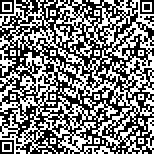本文已被:浏览 603次 下载 436次
Received:June 21, 2022 Published Online:March 11, 2023
Received:June 21, 2022 Published Online:March 11, 2023
中文摘要: 目的 评价术中脑氧饱和度(rSO2)监测与目标导向调控对青少年脊柱侧凸矫形术后早期神经认知障碍的影响。方法 南京大学医学院附属鼓楼医院择期行脊柱侧凸矫形手术患者86例,年龄11~18岁,ASA分级Ⅰ或Ⅱ级,按随机数字表法分为rSO2调控组(G组,n=43)和对照组(C组,n=43)。以患者入室安静状态下呼吸空气测得的rSO2为基础值。G组当rSO2下降>基础值10%立即予以提高呼末二氧化碳分压、提高吸入氧浓度、输注红细胞、调整头颈偏侧角度、升高平均动脉压等措施使rSO2降低幅度尽量低于10%;C组仅监测rSO2按常规麻醉管理。记录两组麻醉诱导前(T0)、气管插管后5 min(T1)、手术开始后30 min(T2)、椎板暴露完毕后30 min(T3)、截骨矫形开始后30 min(T4)、手术结束前即刻(T5)的rSO2。记录两组术中rSO2降低超过10%且持续时间超过5 min的例数,并按降低程度分类(10%≤rSO2下降<20%为轻度,20%≤rSO2下降<30%为中度,rSO2下降≥30%为重度)。记录两组术中及麻醉复苏期相关指标。评估并记录两组术后发生神经认知障碍的例数。〖HTH〗结果〖HTSS〗每组各有40例患者完成研究。两组T2、T4时的rSO2低于其他时间点(P<0.05),G组T2、T4时的rSO2高于C组(P<0.05),其余时间点两组rSO2的差异无统计学意义(P>0.05)。G组睁眼时间、拔管时间、麻醉后恢复室内停留时间短于C组(P<0.01)。G组1例、C组2例患者发生中度脑缺氧,G组轻度脑缺氧发生率低于C组,正常rSO2比率G组高于C组(P<0.05)。两组术后均发生1例术后谵妄,差异无统计学意义(P>0.05)。G组神经认知恢复延迟发生率低于C组(10.0% vs 27.5%, χ2=4.02, P<0.05)。结论 采用术中rSO2监测与目标导向调控可以有效减少青少年脊柱侧凸矫形术中脑缺血缺氧的程度,加快患儿复苏,减少术后早期神经认知障碍的发生率。
Abstract:Objective To evaluate the influences of intraoperative regional cerebral oxygen saturation (rSO2) monitoring and goal-oriented regulation on postoperative early neurocognitive disorders in surgical treatment of adolescent idiopathic scoliosis. Methods A total of 86 adolescents aged 11-18 years old and with American Society of Anesthesiologists (ASA) class Ⅰ or Ⅱ undergoing elective surgery for scoliosis were randomly assigned into rSO2regulation group (G group, n=43) and control group (C group, n=43). The rSO2 value measured in a quiet state was defined as the baseline after the patients entering operating room. As rSO2 value decreased by more than 10% of the baseline, the active measures should be immediately taken to maintain rSO2 value at the target range (decreasing lower than 10% of the baseline), including the increases of partial pressure of end-tidal carbon dioxide, inhaled oxygen concentration and mean arterial pressure (MAP), adjusting the lateral position of the head and neck and transfusion of red blood cells in G group, and the routine anesthesia management was performed in C group. The rSO2values were recorded before anesthesia induction (T0), 5 min after tracheal intubation (T1), 30 min after surgery for scoliosis (T2), 30 min after complete exposure of the lamina (T3), and 30 min after osteotomy (T4) and immediately before the end of the surgery (T5) in both groups. The cases of rSO2 decreased by more than 10% and lasting for more than 5 min during operation were recorded and classified as mild group with a rSO2 decrease of ≥10% and <20%, moderate group with a rSO2 decrease of ≥20% and <30% and severe hypoxia group with a rSO2 decrease ≥30% according to its reduction degree. The relevant indexes during operation and anesthesia recovery period were recorded, and the postoperative neurocognitive disorders were observed and evaluated in two groups. Results Forty patients in each group ampleted the study. Eye opening time, extubation time and retention time in post-anesthesia care unit in G group were significantly shorter than those in C group (P<0.05). The rSO2 values at T2 and T4 were significantly lower than those at other time points in both groups (P<0.05), and they were statistically higher in G group than those in C group at T2 and T4 (P<0.05). There was no significant difference in rSO2 values at T0, T1, T3 and T5 between two groups (P>0.05). There were 1 and 2 cases of moderate cerebral hypoxia in G group and C group, respectively. The incidence of mild cerebral hypoxia in G group was significantly lower than that in C group (P<0.05), and the percentage of normal rSO2 value in G group was statistically higher than that in C group (P<0.05). There was no significant difference in the incidence of postoperative delirium (one case per group, P>0.05). The incidence of delayed neurocognitive recovery in G group was significantly lower than that in C group (10.0% vs 27.5%, χ2=4.02, P<0.05). Conclusion Intraoperative rSO2 monitoring and goal-oriented regulation can effectively reduce the degree of cerebral ischemia and hypoxia during surgical treatment for adolescent scoliosis, accelerate the recovery and decrease the incidence of early postoperative neurocognitive disorders.
keywords: Cerebral oxygen saturation Scoliosis Cerebral hypoxia Postoperative neurocognitive disorders General anesthesia
文章编号: 中图分类号: 文献标志码:B
基金项目:
| Author Name | Affiliation |
| WU Hao, GU Wei | Department of Anesthesiology,Nanjing Drum Tower Hospital, The Affiliated Hospital of Nanjing University Medical School, Nanjing, Jiangsu 210008,China |
| Author Name | Affiliation |
| WU Hao, GU Wei | Department of Anesthesiology,Nanjing Drum Tower Hospital, The Affiliated Hospital of Nanjing University Medical School, Nanjing, Jiangsu 210008,China |
引用文本:
